Land Use Sustainability: Assessment of the Dynamic Response of Typical Bedrock-Buried-Hill Earth Fissure Sites in the Su-Xi-Chang Area
Abstract
:1. Introduction
2. Background
2.1. Structure
2.2. Earth Fissures
2.2.1. Earth Fissures in Yingguoan (F1–2, 1991)
2.2.2. Earth Fissures in Guangming Village (F3–4, 1998)
2.2.3. Earth Fissures in Chaqiao (F6, 1992)
2.2.4. Earth Fissures in Hetang, Jiangyin City (F9, 1995)
3. Methodology
3.1. Microtremor Test
3.2. Data Processing Method
4. Results
4.1. Spectral Analysis
4.2. Amplification Factor Analysis
5. Discussion
6. Conclusions
Author Contributions
Funding
Institutional Review Board Statement
Informed Consent Statement
Data Availability Statement
Conflicts of Interest
References
- Peng, J.; Qiao, J.; Sun, X.; Lu, Q.; Zheng, J.; Meng, Z.; Xu, J.; Wang, F.; Zhao, J. Distribution and generative mechanisms of ground fissures in China. J. Asian Earth Sci. 2020, 191, 104218. [Google Scholar] [CrossRef]
- Peng, J.; Sun, X.; Lu, Q.; Meng, L.; He, H.; Qiao, J.; Wang, F. Characteristics and mechanisms for origin of earth fissures in Fenwei basin, China. Eng. Geol. 2020, 266, 105445. [Google Scholar] [CrossRef]
- Wang, G.Y.; You, G.; Shi, B.; Qiu, Z.L.; Li, H.Y.; Tuck, M. Earth fissures in Jiangsu province, China and geological investigation of Hetang earth fissure. Environ. Earth Sci. 2010, 60, 35–43. [Google Scholar] [CrossRef]
- Gao, Z.; Zhu, Q.; Ji, Y.; Chen, X. The research on the distribution feature, genetic type and countermeasure about ground fissure events in Jiangsu province of China. J. Seism. 1997, 1, 1–10. [Google Scholar]
- Zhu, J.Q.; Zhu, X.X. Genetical analysis and countermeasures of ground fracture disasters in Hetang town, Jiangyin city. Hydrogeol. Eng. Geol. 1998, 25, 14–15. [Google Scholar]
- Wang, G.Y.; Shi, B.; Wang, X.M. Land subsidence and earth fissures in southern Jiangyin. Hydrogeol. Eng. Geol. 2009, 36, 117–122. [Google Scholar] [CrossRef]
- Wu, J.C.; Zhou, G.J.; Wu, Y.L. Research on earth fissures in Guangming village of Wuxi city. J. Geol. 2013, 37, 203–207. [Google Scholar] [CrossRef]
- Chen, G.M.; Wang, X.M.; He, H.S.; Xu, X.L.; Wu, J.H. Formation mechanism analysis on ground fissure based on 3D seismic exploration data in Yinguo’an area, Wuxi city. Hydrogeol. Eng. Geol. 2006, 33, 117–119+123. [Google Scholar] [CrossRef]
- Wu, J.C.; Ye, S.J.; Wu, J.F.; Wang, G.Y.; Zhang, Y. Research on nonlinear coupled modeling of land subsidence in Suzhou, Wuxi and Changzhou areas, China. Hydrogeol. Eng. Geol. 2007, 34, 11–16. [Google Scholar] [CrossRef]
- Spadi, M.; Tallini, M.; Albano, M.; Cosentino, D.; Nocentini, M.; Saroli, M. New insights on bedrock morphology and local seismic amplification of the Castelnuovo village (L’Aquila Basin, Central Italy). Eng. Geol. 2022, 297, 106506. [Google Scholar] [CrossRef]
- Mooney, W.D.; Ginzburg, A. Seismic measurements of the internal properties of fault zones. Pure Appl. Geophys. 1986, 124, 141–157. [Google Scholar] [CrossRef]
- Liu, N.; Huang, Q.; Ma, Y.; Bulut, R.; Peng, J.; Fan, W.; Men, Y. Experimental study of a segmented metro tunnel in a ground fissure area. Soil Dyn. Earthq. Eng. 2017, 100, 410–416. [Google Scholar] [CrossRef]
- Liu, N.; Huang, Q.; Wang, L.; Fan, W.; Jiang, Z.; Peng, J. Dynamic characteristics research of a ground fissure site at Xi’an, China. Tunn. Undergr. Space Technol. 2018, 82, 182–190. [Google Scholar] [CrossRef]
- Liu, N.; Feng, X.; Huang, Q.; Fan, W.; Peng, J.; Lu, Q.; Liu, W. Dynamic characteristics of a ground fissure site. Eng. Geol. 2018, 248, 220–229. [Google Scholar] [CrossRef]
- Xiong, Z.; Wang, Y.; Chen, X.; Xiong, W. Seismic behavior of underground station and surface building interaction system in earth fissure environment. Tunn. Undergr. Space Technol. 2021, 110, 103778. [Google Scholar] [CrossRef]
- Omori, F. On micro-tremors. Bull. Imp. Earthq. Investig. Comm. 1908, 2, 1–6. [Google Scholar]
- Kanai, K. Measurement of microtremor I. Bull. Earthq. Res. Inst. 1954, 32, 199–209. [Google Scholar]
- Aki, K. Space and time spectra of stationary stochastic waves, with special reference to microtremors. Bull. Earthq. Res. Inst. 1957, 35, 415–456. [Google Scholar] [CrossRef]
- Kagami, H.; Duke, C.M.; Liang, G.C.; Ohta, Y. Observation of 1- to 5-second microtremors and their application to earthquake engineering. Part II. Evaluation of site effect upon seismic wave amplification due to extremely deep soil deposits. Bull. Seism. Soc. Am. 1982, 72, 987–998. [Google Scholar] [CrossRef]
- Kagami, H.; Okada, S.; Shiono, K.; Oner, M.; Dravinski, M.; Mal, A.K. Observation of 1-to 5-second microtremors and their application to earthquake engineering. Part III. A two-dimensional study of site effects in the San Fernando valley. Bull. Seismol. Soc. Am. 1986, 76, 1801–1812. [Google Scholar] [CrossRef]
- Ohta, Y.; Kagami, H.; Goto, N.; Kudo, K. Observation of 1-to 5-second microtremors and their application to earthquake engineering. Part I: Comparison with long-period accelerations at the Tokachi-Oki earthquake of 1968. Bull. Seismol. Soc. Am. 1978, 68, 767–779. [Google Scholar] [CrossRef]
- Nakamura, Y. A method for dynamic characteristics estimation of subsurface using microtremor on the ground surface. Q. Rep. Rtri. 1989, 30, 25–33. Available online: http://worldcat.org/oclc/3127232 (accessed on 1 January 1989).
- Chang, J.; Deng, Y.; Xuan, Y.; Yan, Z.; Wu, W.; He, J. The dynamic response of sites with earth fissures as revealed by microtremor analysis—A case study in the Linfen Basin, China. Soil Dyn. Earthq. Eng. 2020, 132, 106076. [Google Scholar] [CrossRef]
- Guo, M.Z.; Ren, F.H. The microtremor methods for dynamics measurement of sites. World Inf. Earthq. Eng. 2005, 21, 139–142. [Google Scholar] [CrossRef]
- Hu, Z.Y.; Yang, S.S.; Li, H. Ground microtremor test and its application in evaluation of sites. World Earthq. Eng. 2011, 27, 211–218. [Google Scholar]
- Shi, L.J.; Chen, S.Y. The applicability of site characteristic parameters measurement based on micro-tremor’s H/V spectra. J. Vib. Shock 2020, 39, 138–145. [Google Scholar] [CrossRef]
- Tao, X.X.; Liu, C.W.; Guo, M.Z. A review of microtremor study in engineering site rating. Earthq. Eng. Eng. Vib. 2001, 21, 18–23. [Google Scholar]
- Yan, W.J.; Wu, Z.J.; Che, A.L.; Zhong, P.F.; Chen, Y.J. Microtremor measurement research of amplification effect in the loess site of the Minxian-Zhangxian MS6.6 earthquake. China Earthq. Eng. J. 2013, 35, 477–482. [Google Scholar] [CrossRef]
- Zhang, L.G.; Deng, Y.H.; Xue, J.; Wang, H.; Liu, Q.; Yang, Y. Preliminary research on dynamic response characteristics of microtremor at ground fissure sites-illustrated with F6 ground fissure in Xi’an. J. Eng. Geol. 2017, 25, 784–793. [Google Scholar] [CrossRef]
- You, X.; Yahong, D.; Jia, H.; Jiang, C.; Zuofei, Y.; Wei, W. Microtremor-based analysis of the dynamic response characteristics of earth-fissured sites in the Datong basin, China. Earthq. Eng. Eng. Vib. 2021, 20, 567–582. [Google Scholar] [CrossRef]
- Cao, G.; Deng, Y.; Chang, J.; Xuan, Y.; He, N.; Mu, H. Dynamic Effect of the Earth Fissure Sites in the Yuncheng Basin, China. Appl. Sci. 2023, 13, 9923. [Google Scholar] [CrossRef]
- Huang, N.E.; Shen, Z.; Long, S.R.; Wu, M.C.; Shih, H.H.; Zheng, Q.; Yen, N.-C.; Tung, C.C.; Liu, H.H. The empirical mode de-composition and the Hilbert spectrum for nonlinear and non-stationary time series analysis. Proc. R. Soc. Lond. 1998, 454, 903–995. [Google Scholar] [CrossRef]
- Duan, S.Q.; He, Z.H.; Huang, D.J. Application of the Hilbert-Huang transform to the analysis of seismic signal. J.-Chengdu Univ. Technol. 2005, 32, 396–400. [Google Scholar] [CrossRef]
- Yinfeng, D.; Yingmin, L.; Mingkui, X.; Ming, L. Analysis of earthquake ground motions using an improved Hilbert–Huang transform. Soil Dyn. Earthq. Eng. 2008, 28, 7–19. [Google Scholar] [CrossRef]
- Gong, M.S.; Xie, L.L. Discussion on the application of HHT method to earthquake engineering. World Earthq. Eng. 2003, 19, 39–43. [Google Scholar] [CrossRef]
- Wu, C.; Zhou, R.Z. Application of Hilbert-Huang transform in extracting dynamic properties of seismic signals. Earthq. Eng. Eng. Vib. 2006, 26, 41–46. [Google Scholar] [CrossRef]
- Peng, Z.; Tse, P.W.; Chu, F. A comparison study of improved Hilbert–Huang transform and wavelet transform: Application to fault diagnosis for rolling bearing. Mech. Syst. Signal Process. 2005, 19, 974–988. [Google Scholar] [CrossRef]
- Rai, V.K.; Mohanty, A.R. Bearing fault diagnosis using FFT of intrinsic mode functions in Hilbert–Huang transform. Mech. Syst. Signal Process. 2007, 21, 2607–2615. [Google Scholar] [CrossRef]
- Ahmed, U.; Ali, F.; Jennions, I. A review of aircraft auxiliary power unit faults, diagnostics and acoustic measurements. Prog. Aerosp. Sci. 2021, 124, 100721. [Google Scholar] [CrossRef]
- Wang, G.Y.; Yu, J.; Wu, S.L.; Wu, J.Q. Land subsidence and compression of soil layers in Changzhou area. Geol. Explor. 2009, 45, 612–620. [Google Scholar]
- Chen, J.; Wang, L.; Wang, P.; Che, A. Failure mechanism investigation on loess–mudstone landslides based on the Hilbert–Huang transform method using a large-scale shaking table test. Eng. Geol. 2022, 302, 106630. [Google Scholar] [CrossRef]
- Garcia, S.; Romo, M.; Alcántara, L. Analysis of non-linear and non-stationary seismic recordings of Mexico city. Soil Dyn. Earthq. Eng. 2019, 127, 105859. [Google Scholar] [CrossRef]
- Garcia, S.; Alcántara, L. Empirical decomposition of seismic response of soft soils. Soil Dyn. Earthq. Eng. 2019, 129, 105918. [Google Scholar] [CrossRef]



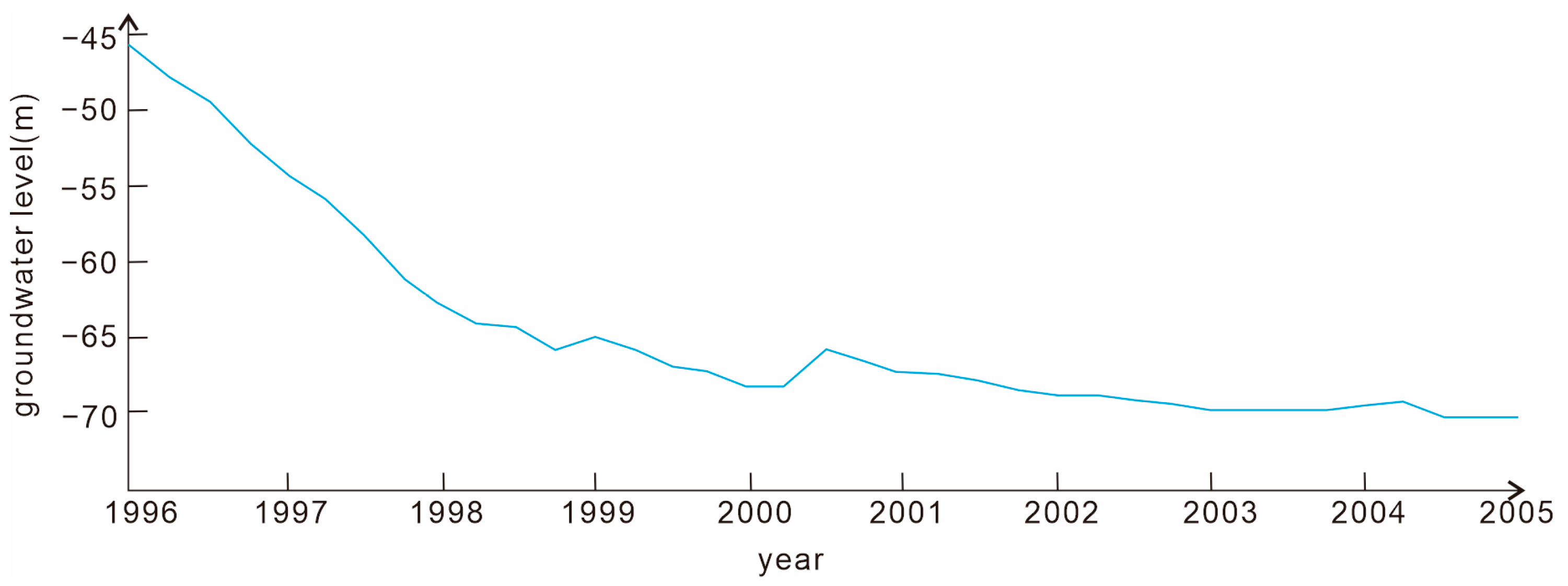

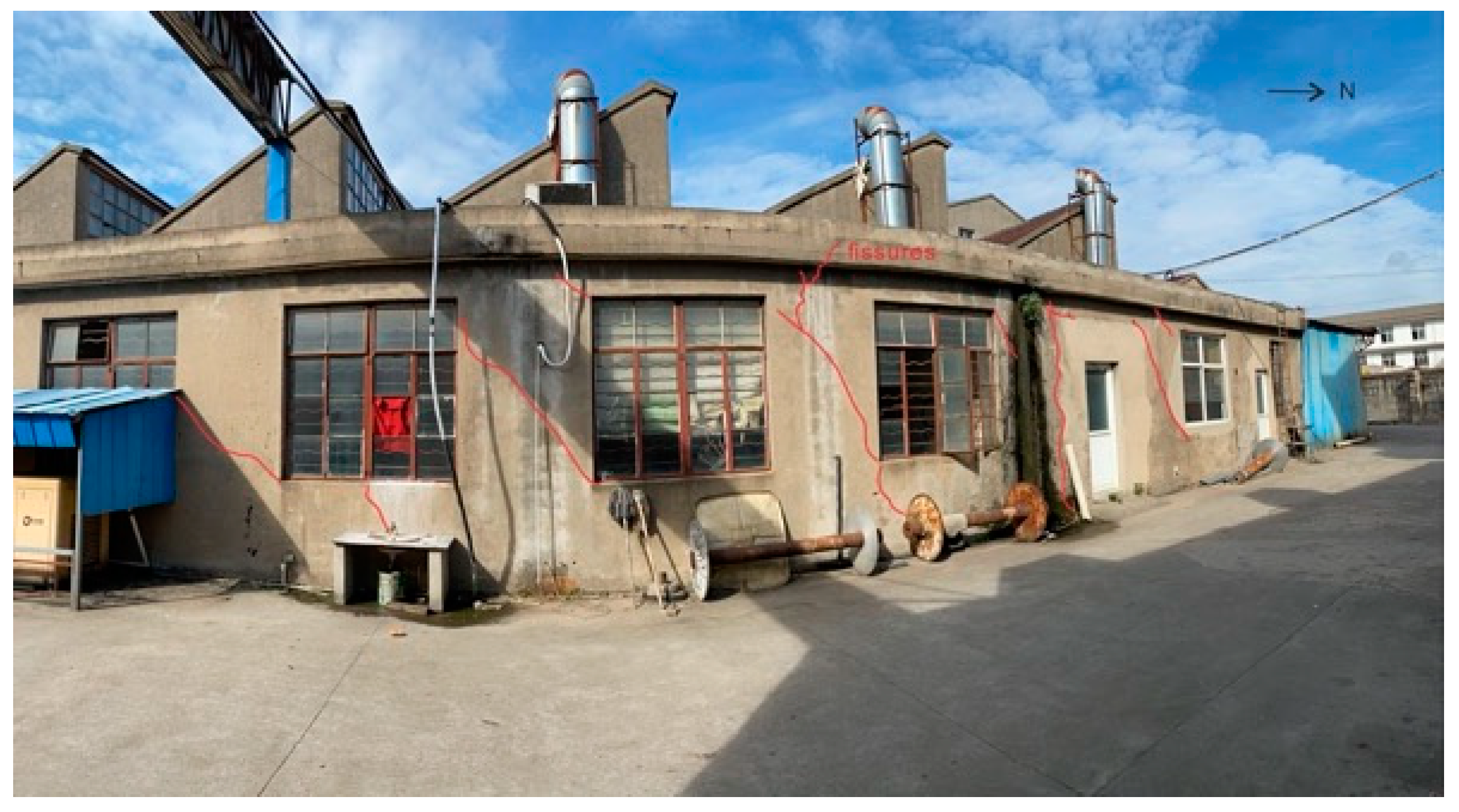






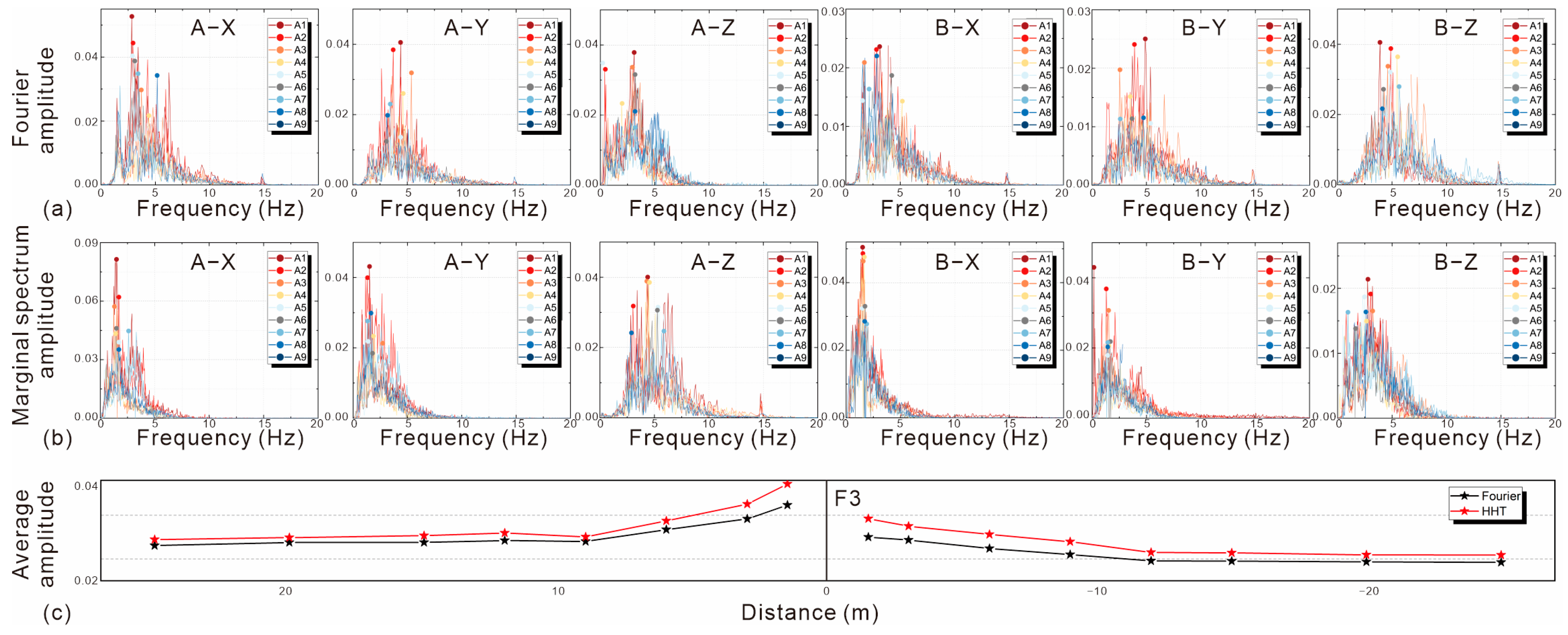
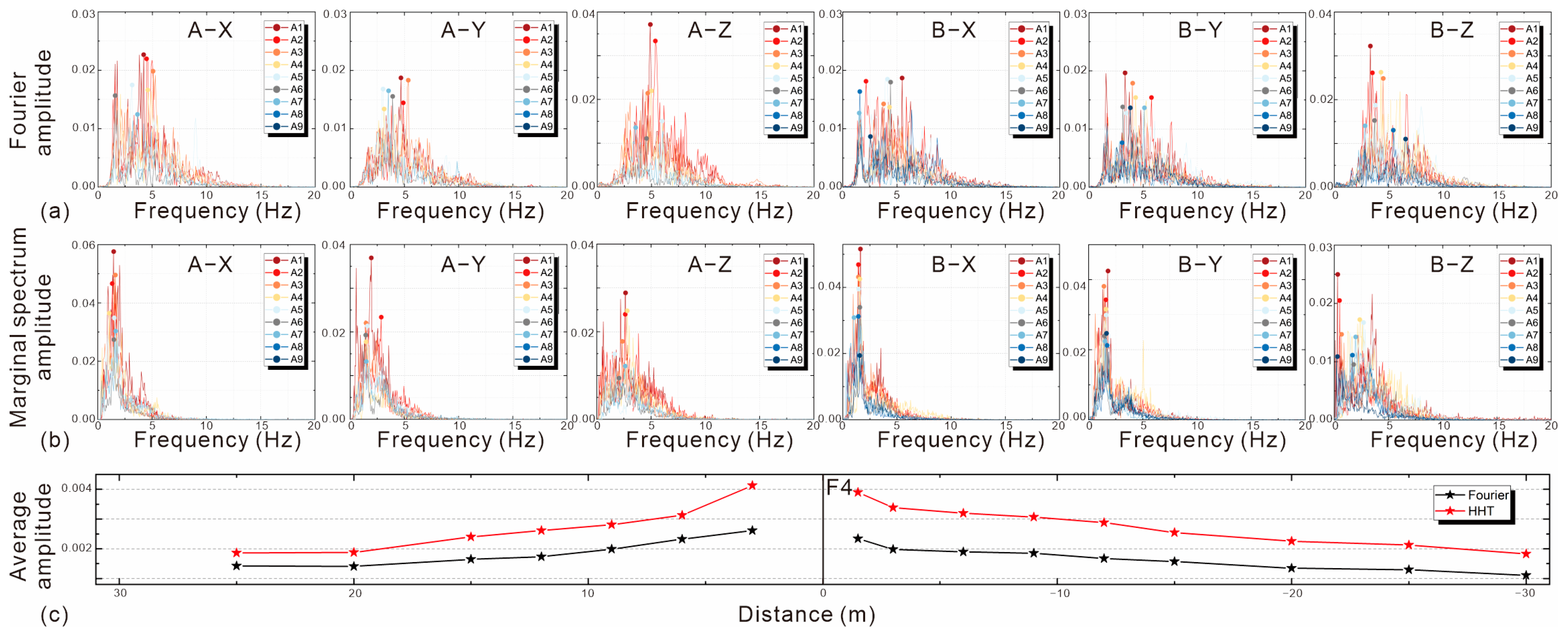
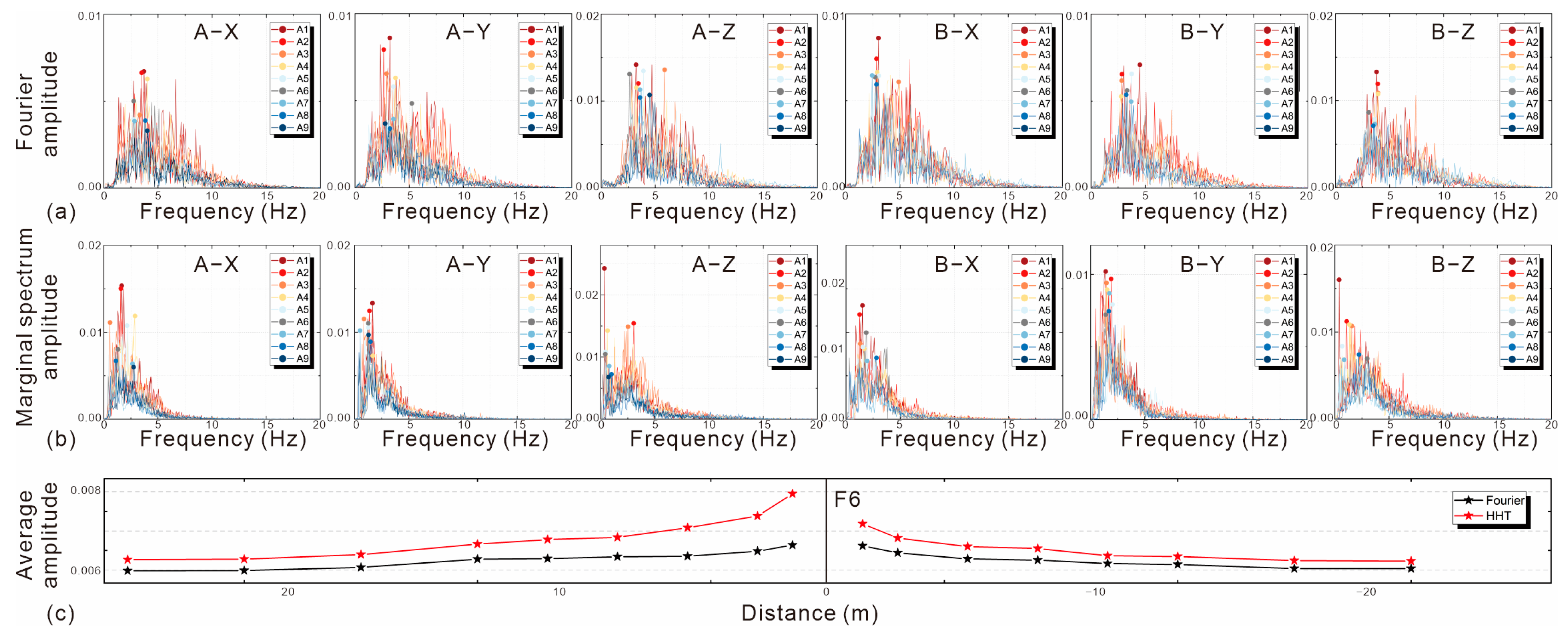

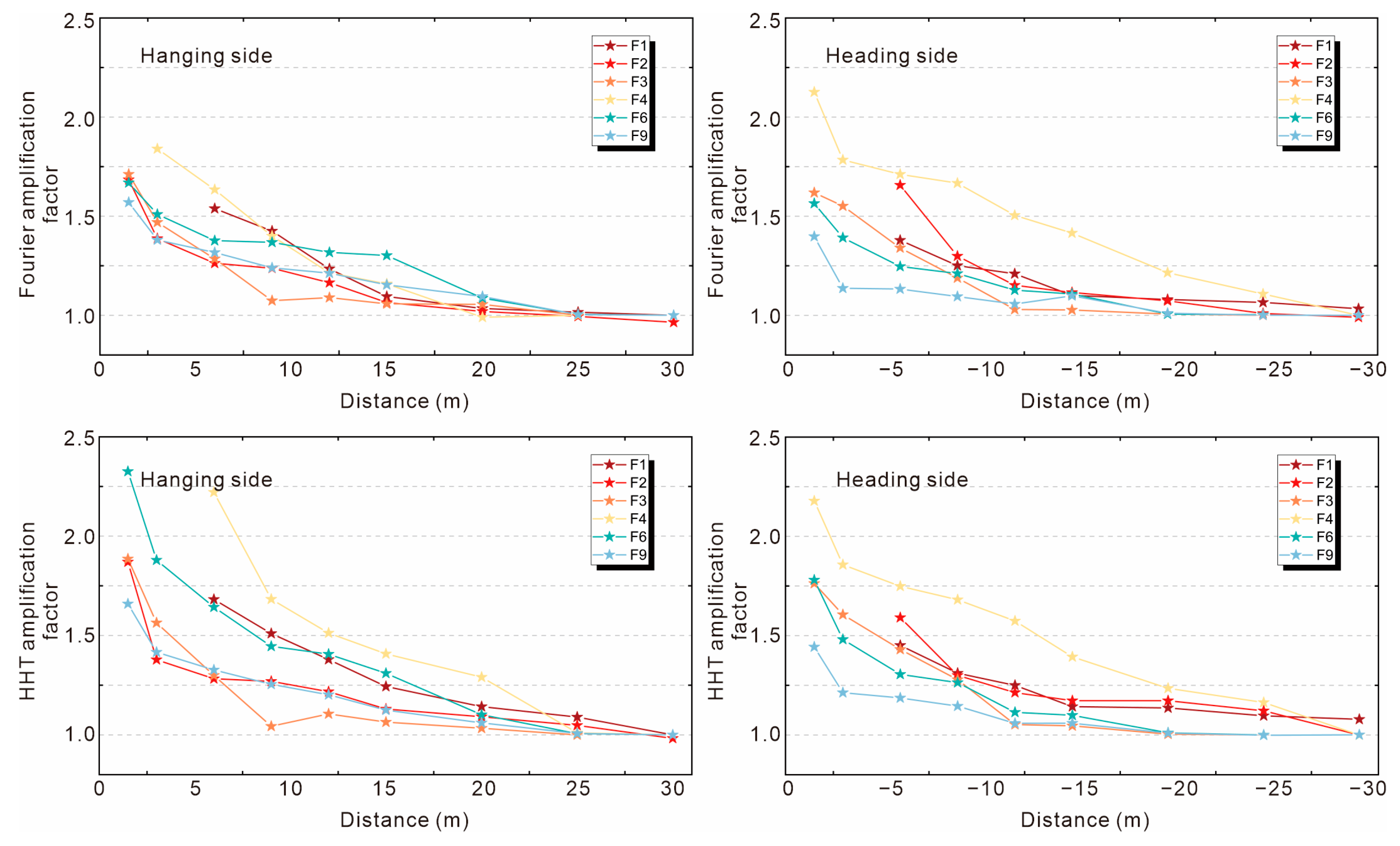
Disclaimer/Publisher’s Note: The statements, opinions and data contained in all publications are solely those of the individual author(s) and contributor(s) and not of MDPI and/or the editor(s). MDPI and/or the editor(s) disclaim responsibility for any injury to people or property resulting from any ideas, methods, instructions or products referred to in the content. |
© 2024 by the authors. Licensee MDPI, Basel, Switzerland. This article is an open access article distributed under the terms and conditions of the Creative Commons Attribution (CC BY) license (https://creativecommons.org/licenses/by/4.0/).
Share and Cite
Cao, G.; Deng, Y.; Mu, H.; Chang, J.; Xuan, Y.; Niu, D. Land Use Sustainability: Assessment of the Dynamic Response of Typical Bedrock-Buried-Hill Earth Fissure Sites in the Su-Xi-Chang Area. Sustainability 2024, 16, 3117. https://doi.org/10.3390/su16083117
Cao G, Deng Y, Mu H, Chang J, Xuan Y, Niu D. Land Use Sustainability: Assessment of the Dynamic Response of Typical Bedrock-Buried-Hill Earth Fissure Sites in the Su-Xi-Chang Area. Sustainability. 2024; 16(8):3117. https://doi.org/10.3390/su16083117
Chicago/Turabian StyleCao, Ge, Yahong Deng, Huandong Mu, Jiang Chang, You Xuan, and Dexin Niu. 2024. "Land Use Sustainability: Assessment of the Dynamic Response of Typical Bedrock-Buried-Hill Earth Fissure Sites in the Su-Xi-Chang Area" Sustainability 16, no. 8: 3117. https://doi.org/10.3390/su16083117





